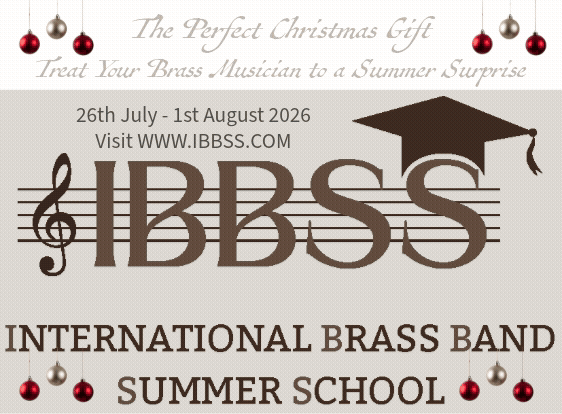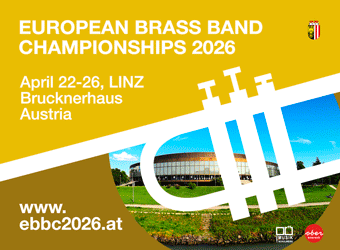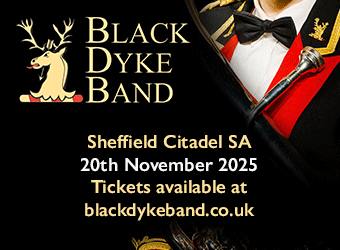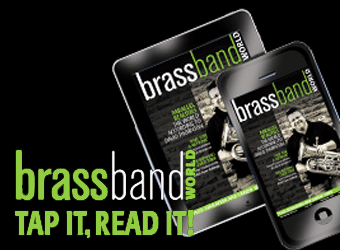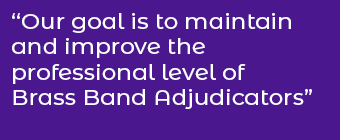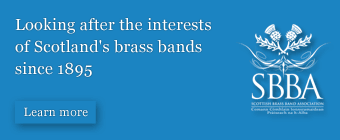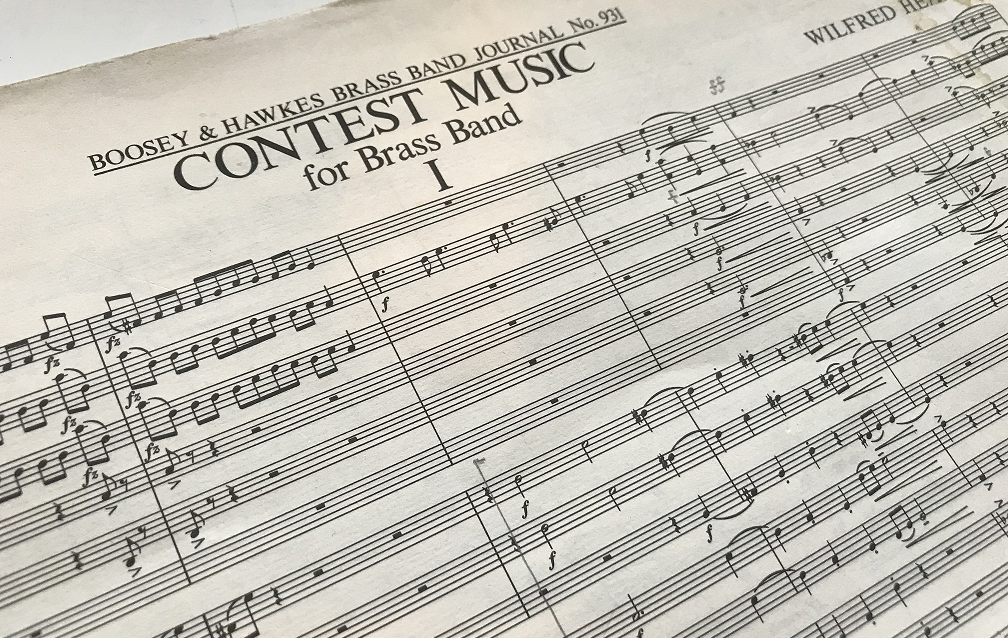
Part Two: Hunting for tunes
It’s a pity that Wilfred Heaton’s own programme note for 'Contest Music' was not published with the full score, since it offers a valuable overview of his construction and method.
The most significant portion is this:
“In the two outer movements the constant metamorphosis of material reflects classical procedures”.
Haydn would have recognised its symphonic proportions if not the style - a compact sonata form first movement, a lyrical second movement and a rondo finale. However, he makes no mention of any Seiber inspired fundamental or governing themes, audible or hidden.
Time to get out the magnifying glass!
First Movement: Allegro
“Some of the material is of a fragmentary nature with a rather more expansive theme which after being turned upside down, initiates the process of uncoiling the material in approximately the reverse order in which it first appeared.”
Heaton’s dynamic arch-like form is a nod to Bartok’s concept of continuous development within sonata structures.
What fascinated me when I first got to know it, is how the paragraphs of the first subject, from the arresting dissonance of the opening to the lively chordal ‘dance’ of the third idea that frames the broader second subject, sound totally coherent despite their fragmentary nature.
Heaton’s dynamic arch-like form is a nod to Bartok’s concept of continuous development within sonata structures.
How did he manage that?
And here’s another mystery. What is this phrase from Paul Hindemith’s 'Concertmusik for brass and strings' (Op. 50) doing there? [Ex.1]

Musical games
Heaton loved to play musical games and the reference seems to signal that 'Contest Music' is his play on Concert Music by a composer Heaton greatly admired.
Heaton adopts the same time signature and key. The jaunty trumpet/cornet themes and balancing leaping bass gestures are very close.
The contrapuntal profile owes as much to Hindemith’s first movement as it does to Bach and Heaton is acknowledging as much with this paraphrase, neatly folded in.
Establishing this link set me thinking what else might a bit of detective work yield by way of thematic ‘excavation’ or reference.
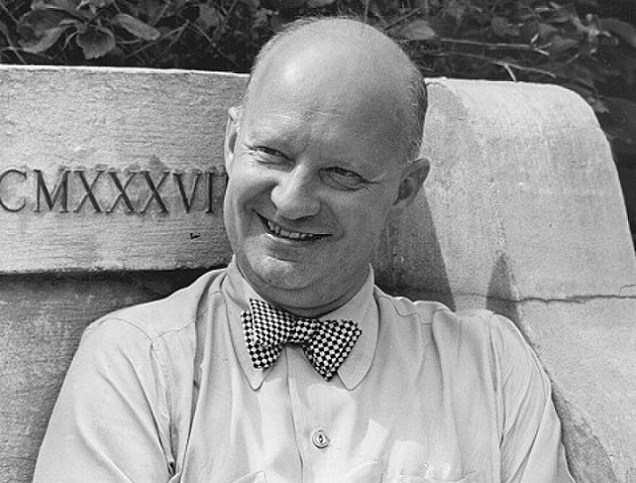
Composer Paul Hindemith
Quarrying
As a teenager he had already tried his hand at thematic ‘quarrying’ in 'Music for Brass Sextet' (1939), published in revised form as 'Toccata' (1973).
Heaton took what Eric Ball described as ‘a little ditty’ - the verse of 'O ‘dem golden slippers' - as his theme and has great fun by using nuggets from it, delaying a full quotation until the end.
Heaton took what Eric Ball described as ‘a little ditty’ - the verse of 'O ‘dem golden slippers' - as his theme and has great fun by using nuggets from it, delaying a full quotation until the end.
Seiber had suggested a method in which the fundamental theme could be audible or disguised, and set me wondering whether there are governing themes in the background of 'Contest Music'; perhaps 'Widdicombe Fair', or something else that might add deeper resonance to Heaton’s ‘constant metamorphosis of material’.
Light dawned
The light dawned in 2007, while I was giving a lecture at Durham University on 'Contest Music' as part of the brass band course led by Ray Farr.
As I was introducing themes he interrupted me saying he thought he recognised a hymn tune in the background and in one of those Hercule Poirot moments I said something like, “Ah, of course….It’s 'Rejoice the Lord is King'!”
I had been researching music for an RNCM Festival of Brass at the time and already had in my mind Leslie Condon’s work 'Festivity' which is founded on the tune by Handel entitled 'Gopsal'.
The association was probably brewing in the subconscious. (Thank you Ray for bringing it to the surface). The first two phrases would appear to generate two significant themes in Heaton’s first movement.[Ex. 2]

Hidden
Was Heaton actually using Handel’s familiar melody as a hidden quarry from which to derive his thematic content?
This would certainly chime with Seiber’s advice.
I looked at the opening next. The dissonant harmonic language is typical of mature Heaton, but the leaping seventh and the phrase ending is so close to Handel’s final phrase, as to feel calculated rather than coincidental. [Ex. 3]
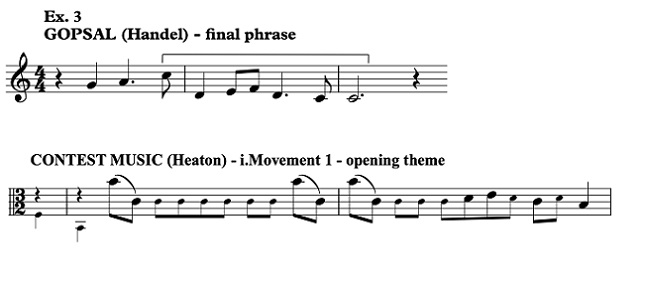
Noble melody
As I indicate in the example, the answering phrases to the chordal dance fragment also appear ‘Handel derived’.
Quarryman Heaton seems to have recognised the potential for thematic transformation in Handel’s noble melody, with its undulating contour and striking range of intervals.
Having found his themes and intervals, he then manipulates them with a level of rigour and clarity that composers as stylistically diverse as Brahms, Schoenberg and Bartok would appreciate.
Second Movement: Molto Adagio
“Between [a] miniature prologue and epilogue lies the movement proper, restrained in character and containing no large emotional climaxes, but having continuously unfolding melodic line, which most instruments share at some point.”
Heaton set out to avoid the romantic excesses of more conventional test piece slow movements, and in so doing created his most ‘advanced’ movement from both compositional and aesthetic stand points. It is also hugely demanding to execute.
The scoring is perilously thin, the prevailing mood rather desolate. Heaton describes the prelude and epilogue as a ‘tonally ambiguous dialogue between trombones and cornets, the former moving harmonically and the latter in a single line’.
Heaton set out to avoid the romantic excesses of more conventional test piece slow movements, and in so doing created his most ‘advanced’ movement from both compositional and aesthetic stand points. It is also hugely demanding to execute.
Haunting material
What he doesn’t tell us is that he has organised this haunting material so that all 12 semitones are in play.
This is not strictly serial but works through separate key layers, cornets moving towards A minor (concert pitch) and trombones in G flat major, emphasising the ambiguity of implied major and minor thirds (A and B flat) that ‘is unresolved right to the end of the movement’.
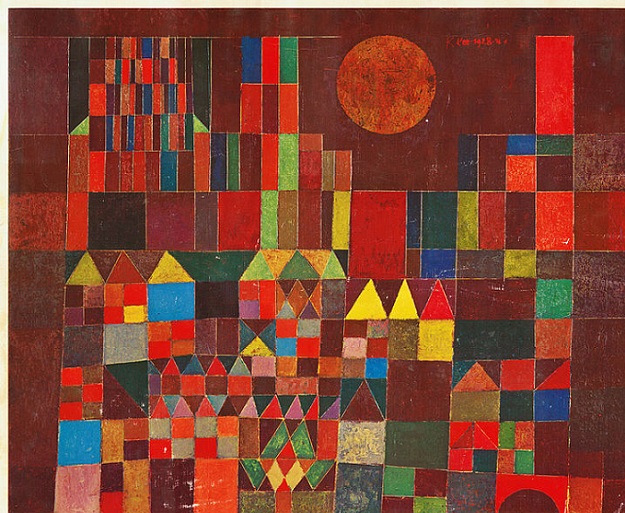
The art of Paul Klee
Modern Art
Heaton loved modern art. His library contained many ‘coffee table’ volumes of beautifully produced reproductions.
He always had one open on his music stand, which he changed daily. What if he had encountered the work of the Swiss born artist Paul Klee who was famously said, ‘drawing is like taking a line for a walk’, ‘moving freely without a goal’?
He always had one open on his music stand, which he changed daily. What if he had encountered the work of the Swiss born artist Paul Klee who was famously said, ‘drawing is like taking a line for a walk’, ‘moving freely without a goal’?
In the slow movement proper, Heaton creates a palpable sense of flow but without any retracing of steps (ie. thematic development). This is in stark contrast to the ‘obligation to the motif’ suggested in outer movements.
But unlike Klee, Heaton takes his melodic line for a more purposeful ‘hill climb’ towards the dangerous, exposed summit of C sharp before steps are retraced back to where we began.
Third Movement: Vivo
Heaton lightens the mood for the finale. This is his take on a classical rondo, which he describes in characteristic matter-of-fact style.
“The main theme, stated after a long introduction, is pentatonic in character at its first appearance, its opening providing material for most of the movement.
The theme occurs four times, each repetition changing its outline and taking it a little higher in pitch. A second theme, or motif, is purely rhythmic and becomes ever more incisive and intense as the movement progresses. The third theme is a broad unison melody played by the whole band.”
Big band challenge
After the economy and precision of the first movement and the emotional reserve of the second, the finale presents a virtuoso ‘big-band’ challenge.
During his war service in the RAF, Heaton used to entertain his fellow aircraftsmen on the piano with popular songs and dance numbers.
His sister Hilda told me that on his return he used to entertain everyone at home with them too, but he soon went ‘back to his Bach and Beethoven!’.

Big band leader Stan Kenton
Stan Kenton
On his first manuscript score of 1973, Heaton inscribed the finale 'To S.K'.
This is Stan Kenton, the great American bandleader whose ground-breaking 1953 LP 'New Concepts of Artistry in Rhythm' infused his adventures in jazz with the cutting edge of contemporary orchestral style, Stravinsky, Bartok in particular.
Much of this was down to Kenton’s first composer-arranger Pete Rugolo. The most famous track on the LP is 'Prologue' (This is an orchestra), during which star players like Maynard Ferguson (trumpet) and Bill Russo (trombone) are introduced. The narrator also refers to the band’s ‘obligation to the beat’.
The narrator also refers to the band’s ‘obligation to the beat’.
Obligation to the beat
I wonder if Heaton’s teacher Seiber knew this recording? He wrote pastiche Kenton from time to time and his pet phrase ‘obligation to the motif’ is surely not a coincidence.
So, if the first movement of 'Contest Music' focuses on Heaton’s ‘obligation to the motif’, might the finale with its razor-sharp rhythmic profile, enshrine his ‘olbigation to the beat’.
While there are jazz and big-band elements in the scoring of 'Toccata' and 'Victory for Me', the finale of 'Contest Music', with its disciplined syncopations, is a deliberate ‘hat tip’ to the Kenton-Rugolo style.
It’s the most active and texturally the most elaborate movement Heaton composed - a huge effort after which the paraphrase of ‘Old Uncle Tom Cobley and All’ and its answering phrases appear like a welcome sigh of relief. [Ex. 4]

Finding a clue
The music of the finale behaves in a very different way to the first movement. It flows in longer spans and the thematic content is more malleable.
The jaunty character of 'Widdicombe Fair' is certainly reflected in Heaton’s moto perpetuo gallop, but searching for evidence of any hidden content is less clear cut than in the first movement.
However, eventually I found a clue.
As the energy subsides in the wake of the big climax, the ‘Old Uncle Tom Cobley’ reference is followed soon after by the movement’s opening theme.
What are we to make of this?
Instinctively right
The juxtaposition feels instinctively right. Is Heaton indicating a connection between the two?
Well, the strongest features of the 'Widdicombe Fair' are the leaping fourth at the start and the closing seventh followed by a falling semitone and if my reading of the process is accurate, Heaton has combined these nuggets to form his principal motif from which his remaining motifs are derived.
Heaton has combined these nuggets to form his principal motif from which his remaining motifs are derived.
'Widdicombe Fair' then becomes a second unheard fundamental theme, which is subject to more fluid metamorphosis than his treatment of Handel’s 'Gopsal' in the opening movement.
If like me, you like to dive into detail, I believe that there are other correspondences and derivations from 'Widdicombe Fair' to identify. [Ex. 5]
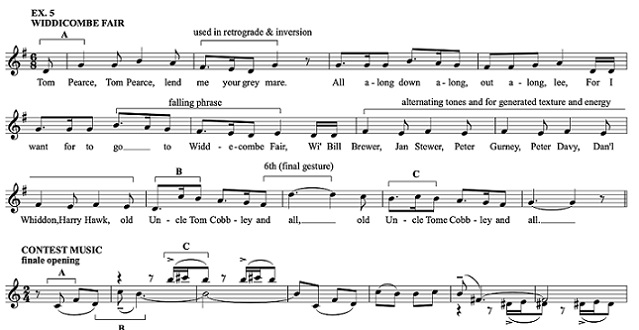
Strong reason
I wonder if Heaton adjusted the melodic line, emphasising the rising seventh, to balance the brusque seventh-based motif that plays such an important part in the first movement and governs the harmonic profile of the second?
That is pure speculation on my part, but I’m certain that Heaton would not have included it without a strong musical reason.
That is pure speculation on my part, but I’m certain that Heaton would not have included it without a strong musical reason.
What I find rather miraculous is that Heaton was able to turn to three seemingly unconnected and diverse sketches, after such a long and fallow period, and produce a work as vibrant, coherent and technically masterful as 'Contest Music'.
One can almost imagine that Seiber’s ‘every note counts’ advice - thematic rigour, economy, clarity and classical balance - was still ringing in his ears twenty years on.
Uncovering possible hidden depths in this music only adds to my admiration for the man and his music. I only wish there was more to enjoy.
Paul Hindmarsh



